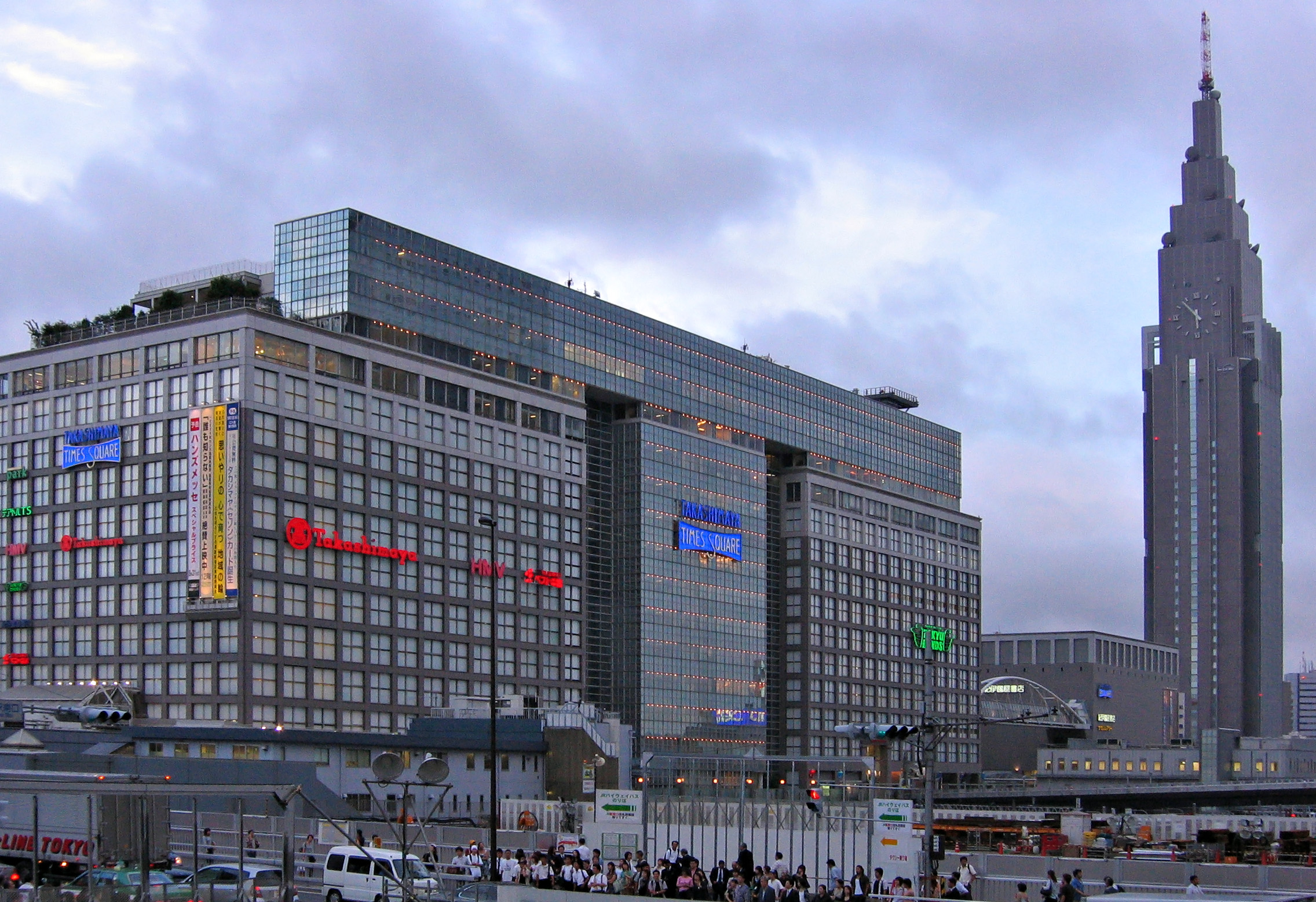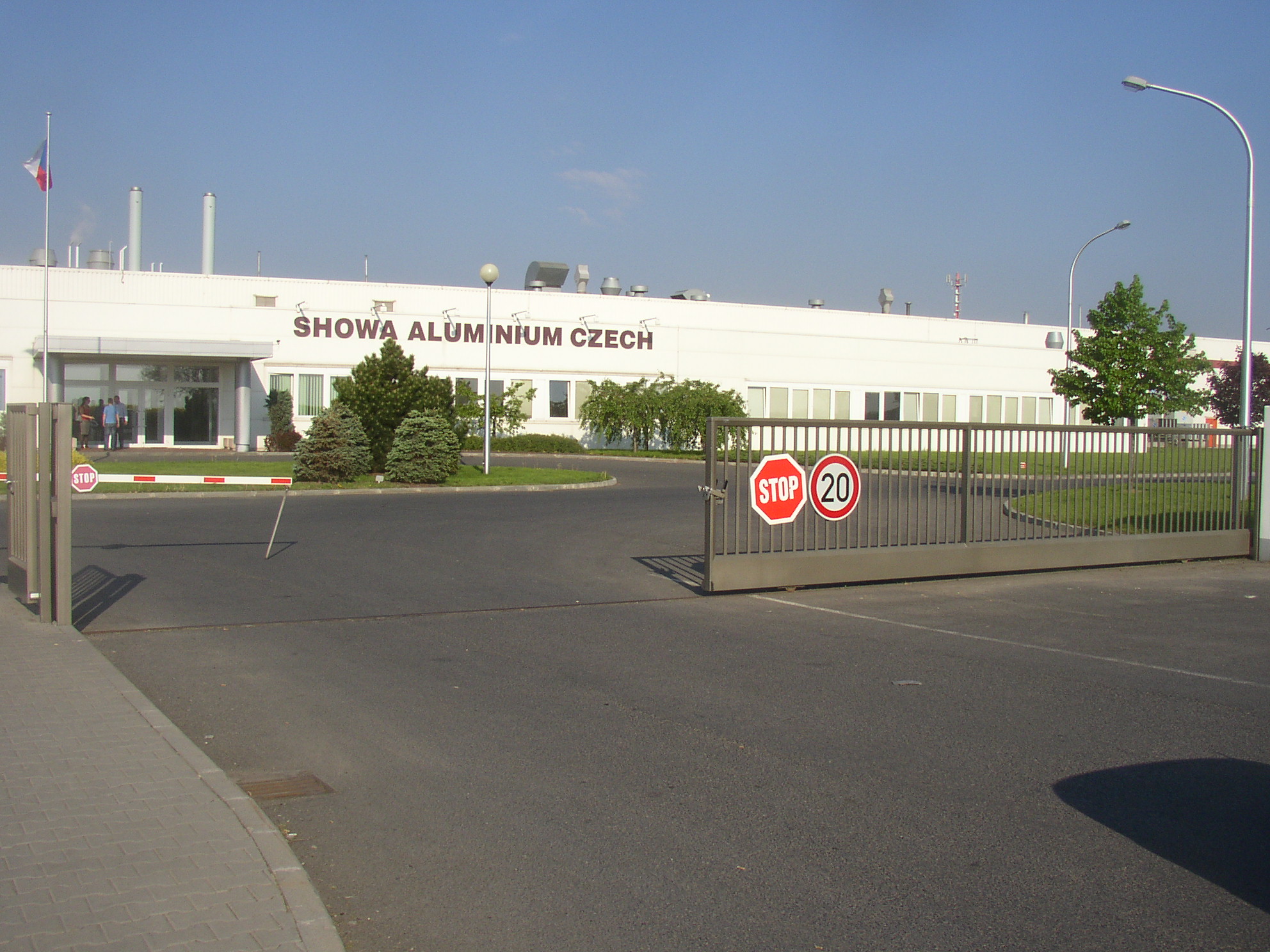|
Marubeni
(, OSE: 8002, NSE: 8002) is a '' sōgō shōsha'' (general trading company) headquartered in Otemachi, Chiyoda, Tokyo, Tokyo, Japan. It is one of the largest ''sogo shosha'' and has leading market shares in cereal and paper pulp trading as well as a strong electrical and industrial plant business. Marubeni is a member of the Fuyo keiretsu. History Marubeni was founded in 1858, where the founder Chubei Itoh moved out of the family business and started a linen trading business with his uncle. It was established in 1918 as Itochu Shoten, Ltd. in a spin-off of certain sales divisions of C. Itoh & Co. ( Itochu) into a separate entity. Itochu Shoten merged with Itoh Chobei Shoten in 1921 to form Marubeni Shoten, Ltd. under the leadership of Chobei Itoh IX. Marubeni started out as a textile trading firm and expanded to trade in other consumer and industrial goods during the 1920s. Marubeni was re-combined with Itochu during World War II to form Sanko Kabushiki Kaisha Ltd. (1941–44 ... [...More Info...] [...Related Items...] OR: [Wikipedia] [Google] [Baidu] |
Itochu
is a Japanese corporation based in Umeda, Kita-ku, Osaka and Aoyama, Minato, Tokyo, Aoyama, Minato, Tokyo. It is one of the largest Japanese ''sogo shosha'' (general trading and investment companies) distinguished by the strength of its textile business and its successful business operations in China. Itochu was ranked 72nd on the 2020 list of Fortune Global 500 companies, with an annual trading revenue of US$100 billion. Current business overview Itochu's business has eight major operational divisions, "Division Company". * Textile Company: Itochu trades in raw materials and finished apparel, and also has a brand business. It owns a portfolio of investments and rights in well-known fashion brands including Converse (shoe company), Converse, Hunting World, LeSportsac, Mila Schön and Paul Smith (fashion designer), Paul Smith. In 2018, Itochu acquired the Japanese Master License and exclusive distribution rights for the Laura Ashley plc, Laura Ashley brand. * Machinery Company: ... [...More Info...] [...Related Items...] OR: [Wikipedia] [Google] [Baidu] |
Sogo Shosha
are Japanese wholesale companies that trade in a wide range of products and materials. In addition to acting as intermediaries, ''sōgō shōsha'' also engage in logistics, plant development and other services, as well as international resource exploration. Unlike trading companies in other countries, which are generally specialized in certain types of products, ''sōgō shōsha'' have extremely diversified business lines, in which respect the business model is unique to Japan. The structure of ''sōgō shōsha'' can give them advantages in international trade. First, they have extensive risk management capabilities in that they trade in many markets, keep balances in many foreign currencies and can generate captive supply and demand for their own operations. They also have large-scale in-house market information systems which give them economies of scale in pursuing new business opportunities. Their vast scale also allows them to provide capital in the form of credit, financing ... [...More Info...] [...Related Items...] OR: [Wikipedia] [Google] [Baidu] |
Fuyo Group
is a Japanese ''keiretsu'' descended from the Yasuda zaibatsu, Asano zaibatsu and Okura zaibatsu. They were a major business grouping in Japan up to World War II. In 1948, Yasuda was dismantled, with its key financial arm Yasuda Bank becoming Fuji Bank. The modern Fuyo Group was first developed in the early 1960s around Marubeni and Fuji Bank, paralleling the development of the DKB Group and Sanwa Group. Fuji Bank orchestrated the merger of Marubeni with Takashimaya in 1955 in order to create a strong trading company partner for Fuji's customers. Group presidents began meeting regularly in 1964. Unlike the ''keiretsu'' that developed from the Mitsubishi, Mitsui and Sumitomo ''zaibatsu'' remnants, the Fuyo Group was intended to be open to other businesses as well as legacy ''zaibatsu'' businesses. Fuji Bank merged with Dai-Ichi Kangyo Bank and Industrial Bank of Japan in 2000 to form Mizuho Financial Group. Following the merger, the Fuyo Group became centered on Marubeni ... [...More Info...] [...Related Items...] OR: [Wikipedia] [Google] [Baidu] |
Daiei
, based in Kobe, Hyōgo, is one of the largest supermarket chains in Japan. In 1957, Isao Nakauchi founded the chain in Osaka near Sembayashi Station on the Keihan train line. Daiei is now under a restructuring process supported by Marubeni Corporation and ÆON Co., Ltd., another Japanese supermarket chain. Daiei Inc. runs more than 3,000 stores under the Daiei name as well as through its subsidiaries. In addition to groceries, Daiei is also a department store, selling electronics, home furnishings, and clothes. In terms of net sales, Daiei was formerly the largest retailer in Japan. History The retail chain expanded rapidly in the 1970s and 1980s. Also, stronger sales from competitors such as Ito-Yokado, ÆON, and other regional supermarket chains have hurt Daiei's sales record in recent years. As a part of the series of bootstrap restructuring efforts to avoid filing for IRCJ ( Industrial Revitalization Corporation of Japan) support, the company sold its baseball team, ... [...More Info...] [...Related Items...] OR: [Wikipedia] [Google] [Baidu] |
Takashimaya
is a Japanese multinational corporation operating a department store chain selling a wide array of products, ranging from wedding dresses and other apparel to electronics and flatware. It has more than 12 branches in Japan located in 2 regions, and 4 international branches in Asia. Takashimaya is a member of the Sanwa Group keiretsu. History The first Takashimaya store was opened in Kyoto in 1831 as a sole proprietorship owned by Shinshichi Iida, a merchant from present-day Fukui Prefecture. The original store in Kyoto was only 3.6 square meters in area and specialized in selling gofuku (formal kimono). A second Kyoto store opened in 1893, followed by a Tokyo store in 1897 and an Osaka store in 1898. Takashimaya was incorporated as a gomei kaisha (unlimited liability company) in 1909 and converted to a kabushiki kaisha (stock company) in 1919. Takashimaya began an export business in 1876, following the Meiji Restoration, and established an in-house trading unit in 1887 ... [...More Info...] [...Related Items...] OR: [Wikipedia] [Google] [Baidu] |
Canon Inc
Canon Inc. (; Hepburn: ) is a Japanese multinational corporation headquartered in Ōta, Tokyo, specializing in optical, imaging, and industrial products, such as lenses, cameras, medical equipment, scanners, printers, and semiconductor manufacturing equipment. Canon has a primary listing on the Tokyo Stock Exchange and is a constituent of the TOPIX Core 30 and Nikkei 225 indexes. It used to have a secondary listing on the New York Stock Exchange. Name The company was originally named (). In 1934, it produced the ''Kwanon'', a prototype for Japan's first-ever 35mm camera with a focal-plane-based shutter. In 1947, the company name was changed to ''Canon Camera Co., Inc.'', shortened to ''Canon Inc.'' in 1969. The name Canon comes from Buddhist bodhisattva (), previously transliterated as Kuanyin, Kwannon, or Kwanon in English. History 1933–1970 The origins of Canon date back to the founding of Precision Optical Instruments Laboratory in Japan in 1933 by Takeshi Mitarai, ... [...More Info...] [...Related Items...] OR: [Wikipedia] [Google] [Baidu] |
Showa Denko
{{Infobox company , name = Resonac K.K. , native_name = レゾナック株式会社 , native_name_lang = ja , romanized_name = Rezonakku kabushiki gaisha , logo = Resonac logo.svg , type = Public , traded_as = {{tyo, 4004 , hq_location_city = Tokyo , hq_location_country = Japan , key_people = Mitsuo Ohashi (chairman)Hideo Ichikawa (president & CEO) , industry = Chemicals , products = {{unbulleted list, Inorganics, Aluminium, Electronics, Chemicals , operating_income = JPY 76.7 billion (2007) , net_income = JPY 1,023.2 billion (2007) , num_employees = 15,778 (2008) , homepage = {{URL, resonac.com} {{Nihongo, Resonac, レゾナック株式会社, Rezonakku Kabushiki-gaisha}, formerly {{Nihongo, Showa Denko K. K., 昭和電工株式会社, Shōwa Denkō Kabushiki-gaisha, abbreviated as SDK, is a Japanese chemical company producing chemical products and industrial materials. It was founded in 1939 by the merger of Nihon Electrical Industries and Showa Fertilizers, both ... [...More Info...] [...Related Items...] OR: [Wikipedia] [Google] [Baidu] |
Kubota Corporation
is a Japanese multinational corporation based in Osaka. It was established in 1890. The corporation produces many products including tractors and other agricultural machinery, construction equipment, engines, vending machines, pipe, valves, cast metal, pumps, and equipment for water purification, sewage treatment and air conditioning. Kubota engines are in both diesel and gasoline or spark ignition forms, ranging from the tiny 0.276-liter engine to 6.1-liter engine, in both air-cooled and-liquid cooled designs, naturally-aspirated and forced induction. Cylinder configurations are from single cylinder to inline six cylinders, with single cylinder to four-cylinder being the most common. Those engines are widely used in agricultural equipment, construction equipment, tractors, and marine propulsion. The corporation is listed on the first section of Tokyo Stock Exchange and is a constituent of the TOPIX 100 and Nikkei 225 The Nikkei 225, or , more commonly called the ''Nik ... [...More Info...] [...Related Items...] OR: [Wikipedia] [Google] [Baidu] |
Japanese Asset Price Bubble
The was an economic bubble in Japan from 1986 to 1991 in which real estate and stock market prices were greatly inflated. In early 1992, this price bubble burst and the country's economy stagnated. The bubble was characterized by rapid acceleration of asset prices and overheated economic activity, as well as an uncontrolled money supply and credit expansion.Kunio Okina, Masaaki Shirakawa, and Shigenori Shiratsuka (February 2001):The Asset Price Bubble and Monetary Policy: Japan's Experience in the Late 1980s and the Lessons More specifically, over-confidence and speculation regarding asset and stock prices were closely associated with excessive monetary easing policy at the time.Edgardo Demaestri, Pietro Masci (2003): Financial Crises in Japan and Latin America, Inter-American Development Bank Through the creation of economic policies that cultivated the marketability of assets, eased the access to credit, and encouraged speculation, the Japanese government started a prolon ... [...More Info...] [...Related Items...] OR: [Wikipedia] [Google] [Baidu] |
Nippon Steel
(previously known as Nippon Steel & Sumitomo Metal until 2019) is Japan's largest steelmaker, headquartered in Marunouchi, Chiyoda, Tokyo. The company has four business segments, which are steelmaking, engineering, chemicals, and systems solutions. It is the largest producer of crude steel in Japan and the fourth largest in the world. The company is on the Forbes Global 2000 list, ranked 1971 in 2023. The company is the third incarnation of the Nippon Steel name, each time with a slightly different spelling or pronunciation. The original company, known as Japan Iron & Steel Co., Ltd. (日本製鐵, ''Nihon Seitetsu''), was split into two separate companies in 1950. These two companies later merged in 1970 to form and this name lasted until 2012, when it merged with Sumitomo Metal Industries. The company’s English name reverted to its 1970 name in 2019, while its Japanese name returned to the original 1934 name. History Early years Nippon Steel traces its roots to J ... [...More Info...] [...Related Items...] OR: [Wikipedia] [Google] [Baidu] |





